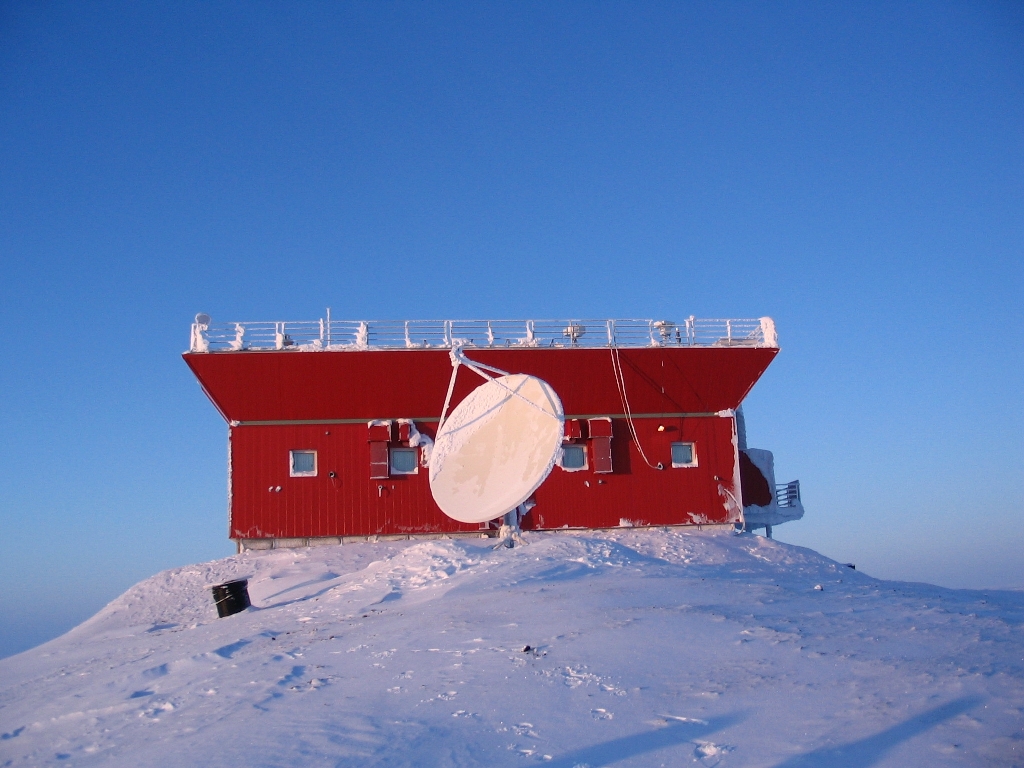Campaign Overview
As the sun comes up each year over the Arctic, the combination of atmospheric dynamics and chemistry causes perturbations in the Arctic atmosphere. Ozone depletion is common, and enhancements and depletions beyond the background levels of many trace gases are observed. Since 2004, a suite of instruments has been deployed to Eureka, Nunavut between February and April to make measurements of these trace gases during spring
 time. These instruments serve a
dual purpose - they directly measure the conditions of the atmosphere
over Eureka, and they also serve to validate the measurements made by
the instruments on board the
Atmospheric Chemistry Experiment (ACE) satellite
and the Optical Spectrograph and InfraRed Imaging System (OSIRIS)
on the Odin satellite as they measure these gases all over the Earth.
time. These instruments serve a
dual purpose - they directly measure the conditions of the atmosphere
over Eureka, and they also serve to validate the measurements made by
the instruments on board the
Atmospheric Chemistry Experiment (ACE) satellite
and the Optical Spectrograph and InfraRed Imaging System (OSIRIS)
on the Odin satellite as they measure these gases all over the Earth. The Canadian Arctic ACE/OSIRIS Validation Campaign will be making intensive validation measurements for the satellite mission from Eureka, Nunavut, between February and April 2016. A suite of 11 instruments will be used to determine total columns (as well as partial columns and vertical profiles where possible) of trace gas species, atmospheric and aerosol extinction, temperature, and pressure for validating the ACE and OSIRIS satellite data under the chemically perturbed conditions present in the springtime Arctic. For ACE, these include the 14 baseline species (O3, CH4, H2O, NO, NO2, ClONO2, HNO3, N2O, N2O5, HCl, CCl3F, CCl2F2, HF, and CO). For OSIRIS, the focus is on O3, NO2 and BrO and aerosol measurements. Daily measurements are being made during the campaign. These high temporal resolution results will give context to the sparse (in time and space) ACE occultation measurements. These results will be used to perform scientific as well as validation studies and thereby enhance the Arctic science studies done with the ACE and OSIRIS datasets.
These campaigns take place at the Polar Environment Atmospheric Research Laboratory (PEARL) facility at Eureka, Nunavut. Approximately six weeks of observations will be made during the Arctic spring, when the perturbed stratospheric conditions can lead to chemical ozone loss. Instruments especially deployed for the campaign include UV/Vis spectrometers, and the ground-based versions of both ACE instruments, PARIS-IR and MAESTRO-G. In addition, the campaign will make use of extensive on-site instrumentation, including CANDAC's Bruker FTS, UV/Vis spectrometers and E-AERI. The campaign is split into two phases: the intensive and extended phases. The intensive phase takes place from 27 February – 18 March. During this time, measurements are made by all instruments and daily ozonesonde flights are launched. A team of scientists will be at the station, ensuring maximum data collection. From 19 March - 1 April, the campaign continues (with fewer scientists) as the extended phase. During this time, measurements will be by all instruments (mostly operating autonomously), and ozonesonde flights will be made weekly.
This website serves as the portal to the 2016 campaign. Follow our adventures with our daily journal and photos from the campaign.
Interested in ACE? This plot shows the latitude of ACE occultations during the campaign: Latitude of occultations within 500 km of Eureka, Nunavut.